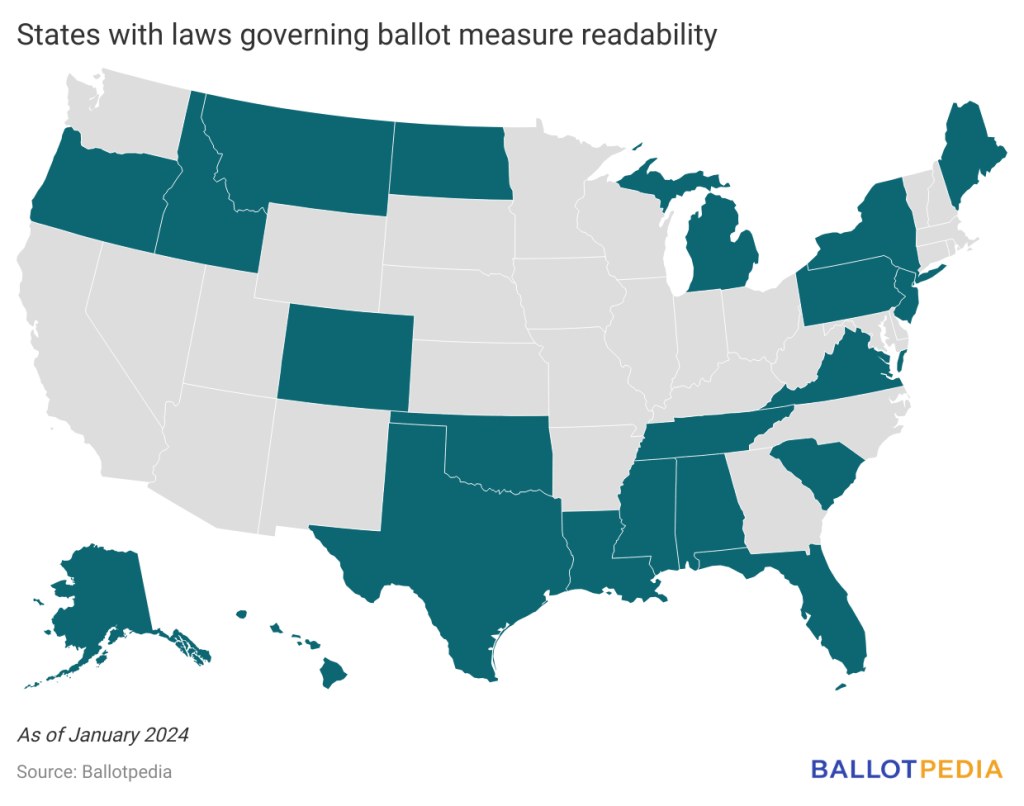Ballotpedia identified 21 states that have enacted laws addressing how legislators, secretaries of state, or other election officials write the question or description of a ballot measure.
New York and North Dakota were the most recent states to do so in 2023. The New York State Legislature passed a law requiring that state ballot measure questions be written in plain language and at no higher than an eighth-grade reading level. A state board is responsible for writing the ballot language in New York.
New York Sen. Leroy Comrie (D-14) wrote in his sponsor memo for the law, “An assessment of the readability of two ballot proposals submitted to the voters on the November 2021 ballot determined that voters needed a college reading comprehension level to understand the proposals. If voters cannot understand the text—or the implications of the question—they cannot participate effectively. The solution is writing ballot questions in plain language.”
In North Dakota, Senate Bill 2163 requires summaries of ballot measures to be written in “plain, clear, understandable language using words with common, everyday meaning.” The secretary of state, in consultation with the attorney general, is responsible for writing the ballot summaries in North Dakota.
State laws address ballot measure readability in a variety of ways. Some laws address only the ballot question, and others apply to ballot summaries. Five states—Alabama, Michigan, Mississippi, North Dakota, and Tennessee—require everyday language or everyday meaning when drafting ballot questions or summaries. Other states’ criteria include clear, not misleading, simple, unbiased, concise, easily understood, or plain language. Texas has a law addressing the ballot language of bond measures requiring “a plain language description of the single specific purposes for which the debt obligations are to be authorized.”
Every October, Ballotpedia publishes the readability scores for statewide ballot measure questions and summaries using Flesch Reading Ease (FRE) and Flesch-Kincaid Grade Level (FKGL). The average readability score between 2017 and 2023 was 18.5 years of education. States with laws related to readability had an average ballot title grade level of 18.6. States that did not have laws related to readability had an average ballot title grade level of 18.4.
The table below highlights the states that have adopted laws related to ballot measure readability.

Additional reading:


